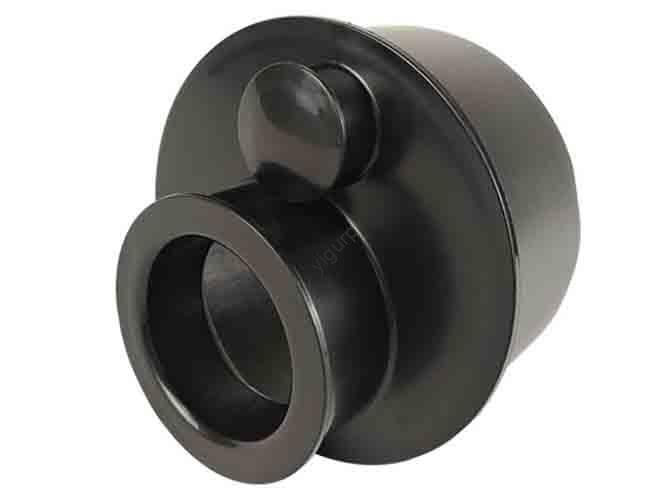When developing new products, choosing the right materials for prototype and replica parts directly affects testing accuracy, production efficiency, and cost control. This article will break down common materials, their performance comparisons, and selection strategies to help you make informed decisions.
1. Core Materials for Prototype & Replica Parts: Overview & Key Traits
Below is a detailed table of 7 widely used materials, including their core advantages, typical applications, and limitations—designed to let you quickly match materials to your needs.
| Material Name | Core Advantages | Typical Applications | Limitations |
| Polyurethane (PU) | High strength, good expandability; flexible/rigid options | Soft rubber parts, ABS/PC-like replicas | Lower heat resistance than high-temp materials |
| Silicone | Excellent elasticity, easy demolding | Elastic components (e.g., gaskets, soft grips) | Low mechanical strength; not for load-bearing parts |
| ABS | Balanced strength & toughness, easy processing | Structural prototypes (e.g., housings, frames) | Poor chemical resistance to strong solvents |
| PP (Polypropylene) | Good chemical stability, heat resistance (~100°C) | Food-contact parts, lightweight components | Low impact resistance at low temperatures |
| PC (Polycarbonate) | High transparency, strong impact resistance | Transparent parts (e.g., lenses, covers) | Prone to scratching; higher cost than acrylic |
| Acrylic (PMMA) | Superior transparency, easy polishing | Display prototypes (e.g., exhibition models) | Brittle; lower impact resistance than PC |
| High-Temperature Resistant Materials | Withstands >200°C; maintains performance in heat | Engine parts, high-temp tooling | Higher cost; complex processing |
2. How to Compare Materials for Specific Needs? (Contrast & Decision Guide)
Not sure whether to pick PC vs. Acrylic for a transparent part, or PU vs. Silicone for a flexible component? Use these side-by-side comparisons to resolve common dilemmas.
2.1 Transparent Prototype Parts: PC vs. Acrylic
| Comparison Factor | PC (Polycarbonate) | Acrylic (PMMA) |
| Transparency | ~90% (slight blue tint) | ~92% (clearer) |
| Impact Resistance | Excellent (unbreakable in most cases) | Poor (easily cracked) |
| Scratch Resistance | Low (needs coating) | Medium (better than PC) |
| Cost | Higher | Lower |
| Recommendation | For parts needing durability (e.g., safety covers) | For display-only parts (e.g., model showcases) |
2.2 Flexible Prototype Parts: PU vs. Silicone
If your project requires flexibility, ask: Do I need strength or extreme elasticity?
- PU: Ideal for parts that need both flexibility and structural support (e.g., soft rubber grips for tools). It can mimic the hardness of ABS or PC, making it versatile for functional testing.
- Silicone: Better for parts that prioritize elasticity and heat resistance (e.g., seals for high-temp devices). However, its low mechanical strength means it’s not suitable for load-bearing roles.
3. 3 Key Factors to Choose the Right Material
Selecting prototype and replica materials is not about “the best material”—but the “most suitable” one. Follow this linear decision process:
- Define Performance Requirements First
Ask: Will the part be exposed to high temperatures? Does it need transparency or flexibility? For example:
- High-temp environments → Choose high-temperature resistant materials.
- Display purposes → Prioritize acrylic (cost-effective) or PC (durable).
- Balance Cost & Lead Time
- Low-cost, fast-turnaround prototypes → ABS or PP (easy to process, widely available).
- High-cost, specialized needs → PC or high-temperature materials (justify with critical performance demands).
- Consider Post-Processing Needs
- If you need polishing (e.g., transparent parts) → Acrylic is easier to polish than PC.
- If you need painting or bonding → ABS adheres better to paints than PP.
4. Yigu Technology’s Perspective on Prototype Material Selection
At Yigu Technology, we believe material selection for prototype and replica parts should align with “fast validation + cost optimization.” Most clients initially lean toward over-spec materials (e.g., choosing PC for simple display models), which increases costs unnecessarily. Our team recommends starting with a “minimum viable material”: use ABS for structural tests, acrylic for displays, and PU for flexible simulations. As the product iterates, we then upgrade to specialized materials (e.g., high-temperature options) only when performance demands it. This approach cuts lead time by 30% on average and reduces material costs by 20%, while still ensuring accurate prototype validation.
FAQ: Common Questions About Prototype & Replica Materials
- Q: Can silicone be used directly as a prototype material, or only for making molds?
A: Silicone can be used directly for prototypes—especially for elastic parts like gaskets or soft covers. However, it’s not suitable for load-bearing or high-strength applications due to its low mechanical strength.
- Q: Which material is better for food-contact prototype parts: PP or ABS?
A: PP is the better choice. It has good chemical stability, is non-toxic, and meets food safety standards (e.g., FDA approval). ABS, by contrast, may release harmful substances when in contact with food or high temperatures.
- Q: How do I improve the heat resistance of a prototype if I’m using PU?
A: You can add heat-resistant additives to PU during processing (e.g., glass fiber or ceramic fillers) to 提升 its heat resistance by 10–20°C. For parts needing >150°C resistance, however, it’s better to switch to dedicated high-temperature materials.
